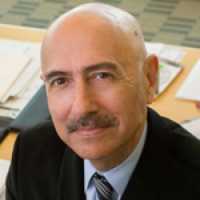27 Apr Artificial Outdoor Nighttime Lights Really Do Keep People Up At Night
MedicalResearch.com Interview with:

Dr. Maurice Ohayon
Maurice M. Ohayon, MD, DSc, PhD
Chief of the Division of Public Mental Health and Population Sciences
Director of the Stanford Sleep Epidemiology Research Centre (SSERC)
John-Arrillaga PI & Professor of Psychiatry and Behavioral Sciences
School of Medicine, Stanford University
Palo Alto, CA 94303
MedicalResearch.com: What is the background for this study? What are the main findings?
Dr. Ohayon: Artificial Lights at night are known to be powerful disruptors of the normal sleep/wake cycle. Light exposure at night acts on suppressing and delaying melatonin secretion and exciting the central nervous system.
In this study we focused on the effects of the outdoor lights at night, (such as street lights and lights, outdoor light fixtures and advertising boards) as measured at nighttime by satellite observations.
We analyzed the sleep habits of a representative sample of the American general population that had been interviewed with the artificial intelligence system Sleep-EVAL.
We found that individuals living in areas at high level of radiance, such as can be found in the downtowns of metropolitan areas, have a delayed bedtime, delayed wake up time and, overall, shorter sleep duration, than people living in areas with low nighttime radiance.
MedicalResearch.com: What should clinicians and patients take away from your report?
Dr. Ohayon: Clinicians and patients should be educated about the effects of nighttime exposure to outdoor artificial lights on sleep habits and understand that, in addition to improving citizen’s safety and traffic security, artificial lights at night may affect sleep patterns and habits.
MedicalResearch.com: What recommendations do you have for future research as a result of this study?
Dr. Ohayon: Future research as a result of this study should carefully evaluate the effects of the conversion of public street lights to LED on sleep patterns of the general public.
LED lights often emit a light rich in blue radiation, which is particularly effective at delaying melatonin secretion.
We can expect that the extensive use of LED lights for outdoor illumination will change radically our way to sleep.
MedicalResearch.com: Thank you for your contribution to the MedicalResearch.com community.
Citation:
Artificial Outdoor Nighttime Lights Associate with Altered Sleep Behavior in the American General Population Maurice M. Ohayon, MD, DSc, PhD1 ; Cristina Milesi, PhD2 1 Stanford University, Palo Alto, CA; 2 NASA Ames Research Center, Moffett Field, CA
SLEEP, Vol. 39, No. 6, 2016
[wysija_form id=”5″]
Note: Content is Not intended as medical advice. Please consult your health care provider regarding your specific medical condition and questions.
More Medical Research Interviews on MedicalResearch.com
Last Updated on April 27, 2016 by Marie Benz MD FAAD
